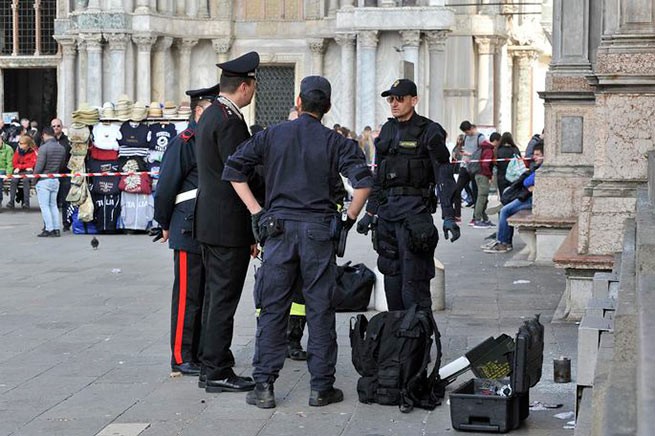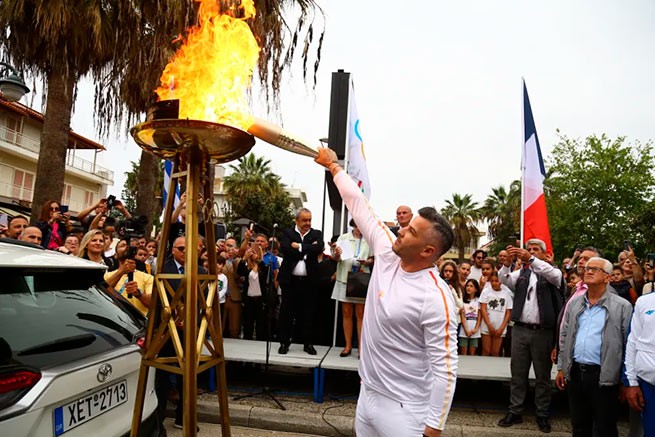According to forecasts of meteorologists, from June 20, the first long wave of heat comes to Greece.
And from Tuesday 21 June in continental Greece and in Attica, the air temperature will reach +36°C, and from Wednesday it will rise by a few more degrees.
As the meteorologist notes, the two hottest days of this week will be Thursday and Friday, and we may see the first +40°C. In fact, the first heat wave will have a longer duration, which can be up to 10 days.
At this time, you need to take care of the health, both your own and loved ones. When the air temperature rises, the cardiovascular system suffers, and we must protect ourselves in order to avoid problems.
In hot weather, we sweat to keep our body temperature at a normal level. However, profuse sweating leads to more fluid loss than usual, resulting in there is a risk of a drop in blood pressure and the development of severe tachycardia.
This is not a major problem for most people as long as they drink plenty of fluids such as water and sugar-free soft drinks. But if we don’t take appropriate action, or if there is a problem with the heart, symptoms of overheating or heat stroke can occur,” says Mr. Constantinos Kontos, a cardiologist at Metropolitan General.
Signs of heat stroke include headache, profuse sweating, cold and damp skin, muscle cramps, nausea, and vomiting. In this case, we stop any activity, move to a cool room, drink plenty of fluids and take a cold shower. We may need medical attention.
What is sunstroke?
Sunstroke is an acute painful condition that occurs due to overheating of the direct rays of the sun on the head. As a result, the blood vessels of the brain expand, a strong flow of blood goes to the head, which can “stagnate” there. In some cases, even ruptures of small blood vessels occur in the brain, which threatens to damage the peripheral and central nervous systems of the human body.
Sunstroke is a special form of heat. He says that the body has acquired more heat than the body could manage by properly cooling the organs and body. As a result, sweating, blood circulation are disturbed, free radicals accumulate in tissues. The consequences of such a blow can be very serious, threatening cardiac arrest and death.
If the person suddenly feeling unwell has dry skin (no sweating), a strong, rapid pulse, confusion and/or loss of consciousness, fever, severe headache, nausea, or vomiting, then seek immediate medical attention.
When the first symptoms appear, it is necessary to respond quickly by providing first aid to the victim. Do not forget at the same time that this is first aid, and it is better to call the ambulance team immediately, since it is usually difficult for a non-professional to navigate and correctly assess the severity of the victim’s condition, especially if sunstroke is in children or the elderly.
General first aid rules:
Eliminate the influence of overheating factors – immediately take the victim to fresh air, always in the shade, or place him in a cool, well-ventilated room, lay him down with his head raised, unbutton his collar, and it is better to undress him to the waist. Put a cold compress on your head, spray your body with cold water. Give plenty of cool water to drink. The usual tincture of valerian will help well: 20 drops per third of a glass of water.
How to prevent heat stroke
- In the heat, it is necessary to maintain water balance (drink plenty of water). Limit the consumption of drinks containing alcohol or caffeine (they cause a large loss of fluid from the body).
- Eat less and more often, focusing on salads and fruits with a high water content (watermelons, cucumbers).
- Preferably in a cool environment.
- Wear light clothing (preferably cotton), loose and not tight.
- We avoid exposure to the sun and heat, mainly from 12 to 17 hours, which is the hottest time of the day.
- Avoid intense physical exercise, especially during the hot hours of the day.
- When we are forced to leave the house during these hours, it is advisable to move around on the shady side of the street, wearing a hat and pre-applying sunscreen, and do not forget to take a bottle of water with you.
Complementary care for patients with cardiovascular disease
People who have heart problems should be given special attention during the summer. The most common heart diseases are hypertension, coronary heart disease, heart failure, and atrial fibrillation. Hypertensive patients should remember that heat causes a drop in blood pressure due to vasodilation and fluid loss. Which, combined with the treatment they receive, could lead to a greater drop in blood pressure. In addition to the general measures mentioned above, these patients should, in consultation with their physician, adjust their treatment, especially if it involves diuretics or calcium channel blockers.
In patients with coronary artery disease, angina may worsen due to the higher oxygen demand during the summer months. In this case, they should immediately contact a cardiologist.
Similarly, patients with atrial fibrillation may experience deterioration due to dehydration and tachycardia, which is due to an increase in temperature.
A special category are patients with heart failure who, due to abnormal heart function (low ejection fraction), receive diuretics, which, in combination with dehydration due to heat and reduced fluid intake, can aggravate the course of the disease and cause serious complications. It is imperative to contact a cardiologist for optimal regulation of the treatment process (especially in anticipation of a long period of heat).
During the summer months and periods of heat, be careful and attentive to your health so as not to encounter unpleasant situations.






More Stories
Vaccine to combat antibiotic resistance
Oral health: increased risk of cancer
Avian influenza virus found in cow's milk